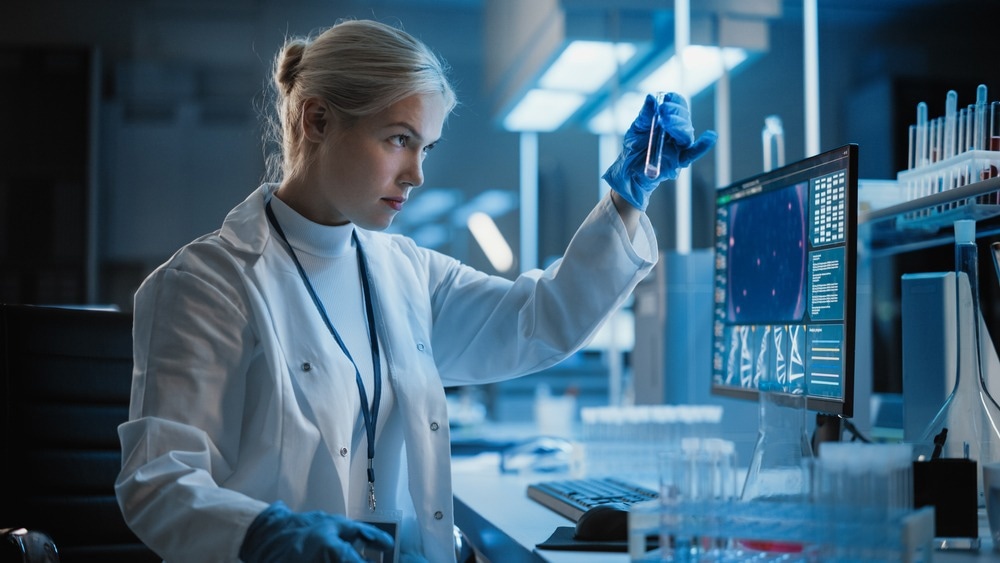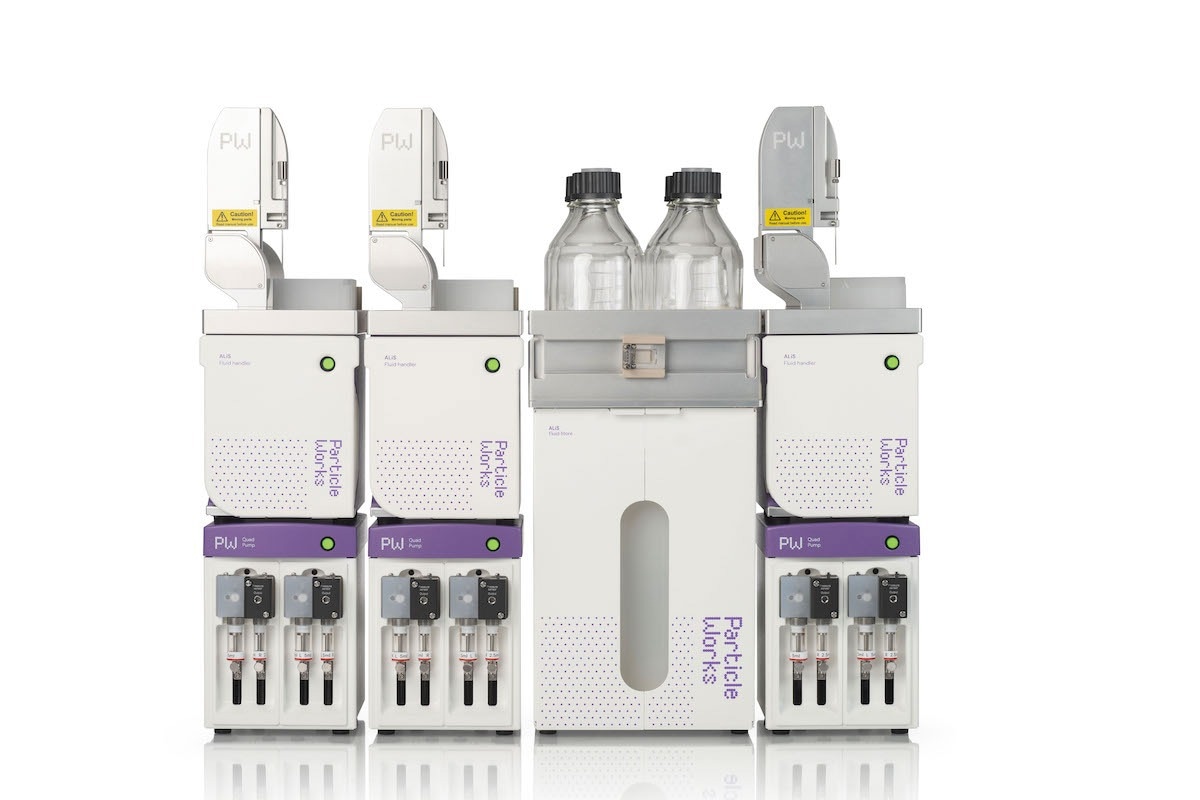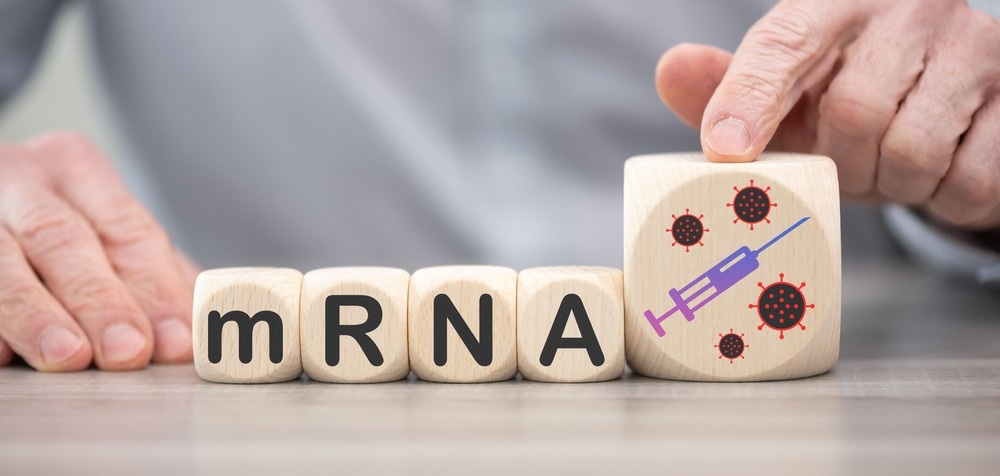Do particles hold the power to pave the way for new drugs? In this interview, we speak to Ben Knappett, Head of Science and Applications at Particle Works, to find out more!
Please can you introduce yourself and tell us what inspired your career within science?
My name is Ben Knappett, and I am the head of Science and Applications for Particle Works, one of the brands of Blacktrace Holdings. I started my career in science at a young age, experimenting with chemistry sets and exploring the field of chemistry.
Throughout my career, I have worked across numerous fields, from pure chemistry to materials science and particle characterisation. I have worked with particles of various sizes for 12 years, including nanoparticles and microparticles.
You are currently the Head of Science and Applications at Particle Works, a company aiming to unlock the true power of particles. Can you tell us more about Particle Works' mission and aims, and how your day-to-day responsibilities align with these?
Particle Works' main goal is to integrate microfluidics solutions for particle synthesis with automation, creating a series of microfluidics platforms for particle synthesis. These platforms guide individuals through the development of new nanomedicines, from automated high throughput screening processes to product optimisation and manufacturing environments.
We are trying to offer a suite of platforms with consistent pumping technology and microfluidic chips that can be used from the early stages of screening to manufacturing.

Image Credit: Gorodenkoff/Shutterstock.com
From starting at Dolomite Microfluidics, you have over 20 years of experience working in particle technology. How has this evolved, and how does your expertise help meet your customers' needs?
Dolomite Microfluidics was one of Blacktrace's earliest brands. It serves as a one-stop shop for all things microfluidics, selling components, chips, pumps, connectors, and everything needed to tackle a range of problems using this technology. It is open to everyone from any application as a source of microfluidics solutions.
Particle Works, on the other hand, specialises in the nanoparticle synthesis space. It offers systems designed specifically for encapsulating materials within nanoparticles composed of polymer particles, lipid particles or hybrid materials.
My background covers diverse nanoparticle sizes, ranging from millimetre-sized to nanoscale particles, and working with various material types. Dolomite Microfluidics provided us with opportunities to work with droplets, microparticles and nanoparticles for years before we formally launched the Particle Works brand. Under Particle Works, we can now leverage our collective knowledge to help customers choose the right systems and tackle their applications effectively.
Life sciences, and drug discovery in particular, have seen incredible advancements in recent years. Despite this, challenges still need to be overcome before the field's true potential is unlocked. What do you believe to be some of the biggest challenges currently faced by the drug discovery sector, and how can nanoparticles help to overcome them?
There are various angles to consider when answering the question. Dealing with the practical aspect, synthesising thousands of potential formulations requires understanding the formulations that produce the best results, and the components that fulfil the desired performance characteristics in the final particles.
To most effectively deliver a therapeutic material into the body, it must be safely transported to the appropriate location, at the right time, to perform the correct function. At the same time, we need to avoid any immunogenic responses.
Different criteria are important when developing new medicines and delivering drugs. Nanoparticles are immensely flexible carriers for these materials, enabling a range of properties that can be tuned and tweaked very subtly, unlike molecular chemistry, which results in specific compounds with a particular set of outcomes.
One of the challenges with nanoparticles, but also one of the benefits, is the amount of nuance in the structure of particles, which allows us to be specific about how we target medicines.
Particle performance depends on many factors, including size, shape, and structure. How do these factors impact the performance of particles, and how does taking control of these enhance encapsulation performance in drug discovery?
Particles need various characteristics to be effective therapeutic delivery vehicles. To achieve this, it is necessary to stabilise the biological material that is being encapsulated, protecting it from degradation and preventing the body's immune response from breaking it down and excreting it.
It is important to avoid an overly aggressive immune response, which can be a negative symptomatic process for the patient. Once injected, getting the material to the right location is crucial to ensure that the therapeutic can be released effectively to do its job.
The properties of the particles are critical to ensuring that each of these individual performance characteristics is effective and working correctly, and that always comes down to the size, shape and structure of the particles.
Process control is critical in microfluidics to ensure that particles are made precisely and consistently, so that each particle is identical to the next and has the same performance characteristics.
Making particles with a process that provides a broad size distribution can lead to different amounts of therapeutic being encapsulated in different particles or substructures within the particle, which might affect its release. It is also critical to select the right size particle for the body's transport mechanisms. Therefore, targeting a specific size window that is both homogeneous and appropriate for the application is vital to ensure good performance.

Image Credit: Particle Works
The drug discovery sector requires a high level of collaboration to bring discoveries to market. How important is collaboration to Particle Works?
Collaboration is very important to Particle Works, and attending conferences – such as SLAS – provides an excellent opportunity to engage with others in the field. Walking the floor and talking to people involved in the upstream and downstream parts of the automation process is highly beneficial, especially when software companies are present to help link everything together.
Our processes are highly complex, so it is also advantageous to see what others are offering, so we can find opportunities to integrate our platform into that process.
At Particle Works, you have two cutting-edge automation platforms paving the way to particle perfection, the Automated Nanoparticle (ANP) System and Automated Library Synthesis (ALiS) System. Can you tell us more about these products and the way they work in tandem to speed up drug development processes?
ALiS is designed to determine the optimal set of reagents for an ideal formulation, so is often the first platform our customers would use.
The industry's biggest challenge at the moment is dealing with the vast numbers of potential lipid formulations required to achieve the right levels of performance and properties for a drug. ALiS is designed to overcome this challenge by processing a large number of samples while minimizing hands-on labour time, costs and timeframes for developing a new drug. It uses microfluidic chips with precise fluidic aspiration and loading processes to carry out reactions in very small fluid volumes. ALiS can combine lipid or nanoparticle precursors with cargo in a controlled manner to form and collect particles.
The system is cleaned after every experiment, making it possible to reuse all consumable parts and tackle a large number of experiments without incurring high costs. In addition, this reduces the amount of consumables used, making it more environmentally friendly, as there is no need to throw away vast amounts of disposable plastic at the development stage.
The ANP System follows on from the ALiS platform. This system is used for the next step in the process, which is to determine the best process for efficiently manufacturing the formulation on a larger scale, while maintaining high encapsulation efficiency and particle size control, as well as low polydispersity.
The ANP System is the ideal way to optimise processes. Using a fixed pair of reagents, we can inject a larger volume through a single manual loading step, and release the reagent gradually to perform a series of automated experiments probing different process parameters, such as the total flow rate and flow rate ratio. We can also explore different chip designs and mixing geometries, to determine the most effective way to produce particles from the formulation identified by ALiS.
Once the optimal formulation and process have been identified, the ANP System enables customers to operate continuously. Instead of loading samples into sample loops and releasing them in small increments, we can directly pump larger volumes through our microfluidic chips to produce tens of litres of particles daily.
ALiS is the only platform combining automation and high throughput screening that is specifically designed for lipid nanoparticles (LNPs), which have proved to be promising vehicles in the delivery of therapeutics. Why did you choose to focus on LNPs when designing your technology? What other advantages do your platforms provide for users?
Lipid nanoparticles have made tremendous progress in recent years, with a significant focus on their development for COVID vaccines. FDA-approved drugs and vaccines now use these lipid nanoparticles, which is the result of years of development.
Since the early 2010s, our microfluidics devices have been used to prepare lipid, polymer, hybrid and carbohydrate nanoparticles, as well as various other materials.
However, lipid nanoparticles have been our customers' primary focus, and have contributed significantly to scientific research. Our systems are designed to work effectively with different material types, although lipid nanoparticles are an excellent formulation tool.
You showcased these platforms at SLAS 2023, an international exhibition bringing together researchers and industry professionals to highlight new advancements in the life sciences. How important are in-person conferences and exhibitions like SLAS in accelerating innovation?
We highly value in-person conferences. Although we did our best with hybrid-type conferences during the COVID-19 pandemic, speaking to larger numbers of people at in-person events is more valuable. It allows us to engage directly with potential customers, collaborators and other industry peers. It is an excellent networking event, and has been very beneficial for us.
We received a lot of interest at our booth, resulting in many interesting conversations for potential partnerships.
We love working collaboratively, so engaging and figuring out how we might work with others in this space to provide better offerings to researchers is fantastic.
With the COVID-19 pandemic catapulting mRNA-based therapeutics into the limelight, how do you see the field of drug discovery evolving over the next 10 years, and what role do you believe particle technologies will play in this?
Over the last 10 years, we have made significant strides in enhancing the specific performance characteristics required of lipid nanoparticles for effective drug delivery to the body.
Currently, we are in the early stages of developing nanomedicines. We can deliver advancements in the complexities of biological compounds, and write coded instructions into mRNA strands, enabling us to carry out previously impossible functionalities, leading to a range of genetic medicines and treatments.
The particles used in the delivery mechanism are a critical component, which will continue to grow in complexity and capability as the biological aspects of drugs evolve. As a result, we will see a host of new therapies emerging over the next decade, making it an exciting time for nanomedicine.

Image Credit: thodonal88/Shutterstock.com
What is next for Particle Works? Are you involved in any exciting upcoming projects?
Particle Works is currently developing and preparing to launch our GMP platform, which will align with the ALiS and ANP systems.
The platform will take customers from high throughput screening in early-stage R&D right through to manufacturing, using the same process platform technology. This includes using the same pumps and microfluidic chips, ensuring a seamless transition to manufacturing.
This next step is huge for us, and we look forward to the upcoming conferences and events planned for this year, including those scheduled to take place in Boston and Europe.